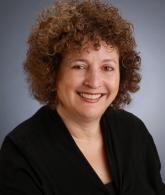Blog
Patient And Family Experience: It’s Personal

 The following article is a re-post written by Sheila Cahnman and was featured in Healthcare Design Magazine. Cahnman is a key leader for development, strategy, and growth of a distinguished healthcare design practice, both nationally and internationally.
The following article is a re-post written by Sheila Cahnman and was featured in Healthcare Design Magazine. Cahnman is a key leader for development, strategy, and growth of a distinguished healthcare design practice, both nationally and internationally.
I decided to re-post her article because her experience is worth reading. In the following article she explains how she was on the other end of the healthcare experience as she accompanied a close family member to outpatient surgery.
On Jan. 7th, 2014 she wrote the following:
“It often takes a personal experience to really drive home the key issues of healthcare design. Recently, I accompanied a close family member for outpatient surgery. It was considered outpatient because it involved a less-than-24-hour stay in the hospital. In reality, it was a five-hour surgery and overnight stay—fairly heavy duty, regardless of the classification.
The moment we drove on the campus of the well regarded community hospital, we realized that the directions were unclear and we’d arrived at the wrong entrance. Walking the length of the campus to the exterior entry marked “Outpatient Surgery,” we learned that outpatient surgery registration had moved to the main lobby.
Once greeted there, we walked (map in hand) by a somewhat confusing path upstairs to perioperative holding, which had no reception desk or waiting and consisted of recliners enclosed by cubicle curtains with almost no space for family members.
Luckily, it was a slow day, or there would have been no acoustical privacy as the nurse and anesthesiologist reviewed detailed patient information. Nevertheless, the professionalism of the staff was outstanding, which helped mitigate our mounting stress levels.
The family waiting area, minimal though adequate, had borrowed light windows with a view of the corridor and only one patient status board—to find your patient’s number on the rather small screen, you had to lean over another waiting family.
I observed as physicians delivered news; most talked to families in the middle of the seating area, while one took them out into the hall and another used the consult room. At 4 p.m., with five families still waiting for news, the surgery waiting volunteer announced she was leaving and that the waiting family members should answer the phone if it rang.
I “volunteered” for the next 1.5 hours to “man the desk” and pass the phone to other families, until we were the only family left awaiting news. Our anxiety mounting, I found the phone number for the OR suite and the staff updated us with welcome news.
Hospital staffing and operations played a large part in our experience, both good and bad. Especially relevant was the need for information and better ways of communicating to families.
However, the lack of good fundamental hospital design and planning—such as clear wayfinding, patient privacy, and adequate family amenities—impacted us, as well.
Most importantly, tension brings out a heightened sensitivity to environmental stressors. Though I don’t want to repeat this experience, it definitely reinforced my commitment to creating environments that enhance the patient and family experience.”
To access Sheila Cahnman’s Blog, click here.







